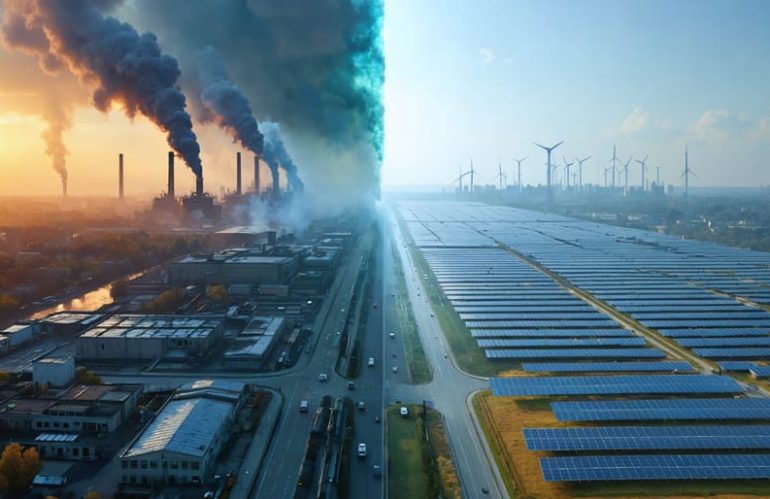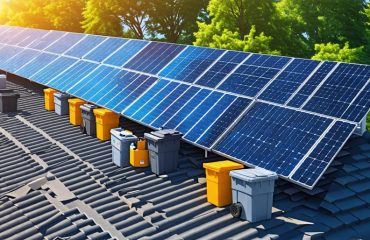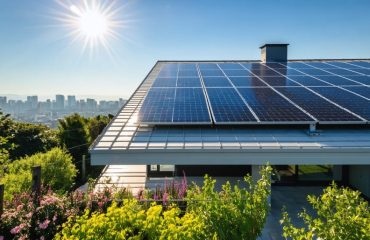Solar energy stands at the forefront of our transition to sustainable power, yet its environmental impact extends far beyond simply reducing carbon emissions. As homeowners increasingly turn to solar panels to power their homes, understanding both the benefits and challenges of this technology becomes crucial for making informed decisions about our energy future.
While solar power dramatically reduces greenhouse gas emissions and water consumption compared to traditional energy sources, its manufacturing process and land use requirements present important considerations. The production of solar panels involves mining raw materials and energy-intensive manufacturing, though technological advances continue to minimize these impacts. Modern solar installations can offset their carbon footprint within just 1-3 years of operation, delivering decades of clean energy afterward.
This shift toward solar represents a critical step in addressing climate change, with the potential to reduce global carbon emissions by 4.9 billion metric tons annually by 2030. For homeowners, this means the opportunity to participate directly in environmental protection while securing long-term energy independence.
The Positive Environmental Benefits of Solar Panels
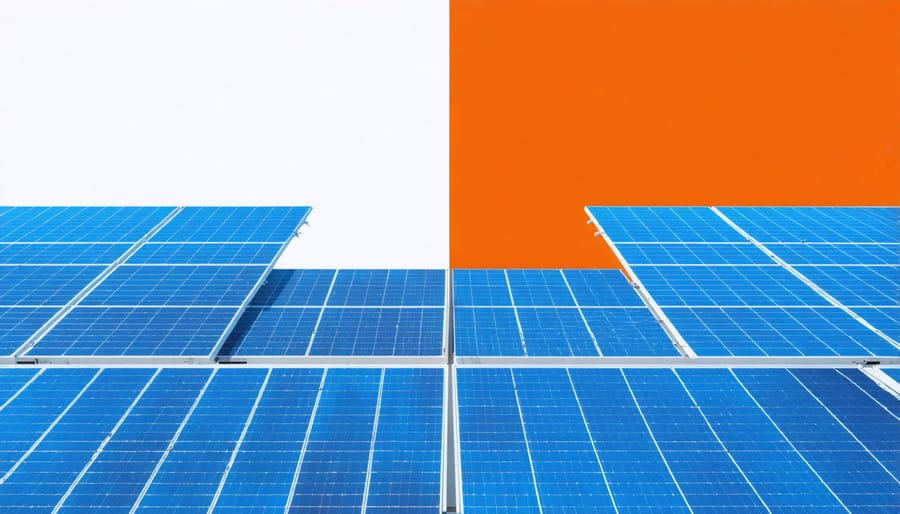
Reduced Carbon Emissions
Solar panels offer one of the most effective ways to reduce your household’s carbon footprint. When you switch to solar power, you directly decrease your reliance on fossil fuels, which are major contributors to greenhouse gas emissions. A typical residential solar system can prevent about 3-4 metric tons of carbon emissions annually – equivalent to planting over 100 trees.
The impact becomes even more significant when you consider the long-term benefits. Over its 25-30 year lifespan, a single residential solar installation can offset approximately 100 metric tons of carbon dioxide. This reduction helps combat climate change and improves local air quality by reducing the need for electricity from coal and natural gas power plants.
To put this in perspective, the average American home produces about 7.5 metric tons of carbon dioxide annually through electricity consumption. By switching to solar, you can eliminate up to 50% or more of these emissions, depending on your energy usage and system size. This substantial reduction isn’t just a one-time benefit – it continues year after year, creating a cumulative positive impact on the environment.
The carbon-reducing benefits extend beyond your home too. As more households adopt solar power, the collective impact creates a ripple effect, decreasing the overall demand for fossil fuel-generated electricity and supporting a cleaner energy grid for everyone.
Less Water Consumption
One of the most significant environmental advantages of solar energy is its minimal water consumption compared to traditional power generation methods. While conventional power plants require massive amounts of water for cooling and steam production, solar panels operate effectively with virtually no water usage during electricity generation.
Traditional coal and nuclear power plants typically consume between 20,000 to 60,000 gallons of water per megawatt-hour of electricity produced. This water is used for cooling systems and converting water into steam to drive turbines. In contrast, solar photovoltaic systems require only occasional cleaning to maintain optimal performance, using roughly 20 gallons of water per megawatt-hour – a fraction of conventional methods.
This dramatic reduction in water consumption becomes particularly important in regions facing water scarcity or drought conditions. By switching to solar power, communities can preserve their valuable water resources for other essential needs like agriculture and drinking water supplies.
Even when comparing different types of solar technology, photovoltaic (PV) panels stand out as the most water-efficient option. While concentrated solar power (CSP) systems do require some water for cooling, they still use significantly less than fossil fuel alternatives. For homeowners, this means that rooftop solar installations not only reduce electricity bills but also contribute to water conservation efforts in their community.
Manufacturing and Installation Considerations
Carbon Payback Period
The time it takes for solar panels to offset their carbon footprint is shorter than many people think. Most modern solar panels achieve their “carbon payback” within 1-4 years, depending on factors like location, panel efficiency, and manufacturing processes. This means that after this brief period, your solar installation will have produced enough clean energy to compensate for all the emissions created during its manufacturing.
For example, a typical residential solar system in a sunny climate can offset its carbon footprint in as little as one year. Even in less sunny regions, panels usually achieve carbon neutrality within four years. Considering that solar panels typically last 25-30 years, this means they spend the vast majority of their operational life producing truly clean, emission-free electricity.
The carbon payback period continues to shrink as manufacturing processes become more efficient and sustainable. Modern panels are produced using cleaner energy sources and improved technologies, resulting in lower initial carbon footprints. This improvement, combined with increasing panel efficiency, means today’s solar installations offer better environmental returns than ever before. After reaching their carbon payback point, solar panels continue to prevent greenhouse gas emissions that would otherwise come from conventional power sources, making them a powerful tool in fighting climate change.
Resource Usage in Production
The solar panel manufacturing process requires various raw materials and energy inputs. The primary components include silicon, aluminum for frames, glass, and various metals for wiring and conductors. Silicon production, the main material in solar cells, demands significant energy and involves mining quartz sand. This sand undergoes purification at high temperatures, typically around 3,000°F, requiring substantial electricity.
Each panel also needs about 20 pounds of aluminum for framing, plus silver and copper for electrical components. Glass manufacturing for the panel surface consumes energy and resources as well. While these materials require considerable resources initially, most are recyclable and can be repurposed at the end of the panel’s life.
The good news is that technological advances are continuously improving manufacturing efficiency. Modern production methods use less energy and materials than earlier generations of solar panels. Additionally, many manufacturers now use renewable energy in their production facilities, reducing the overall environmental footprint. The industry is also developing innovative recycling programs to recover and reuse materials, creating a more sustainable production cycle for future solar installations.
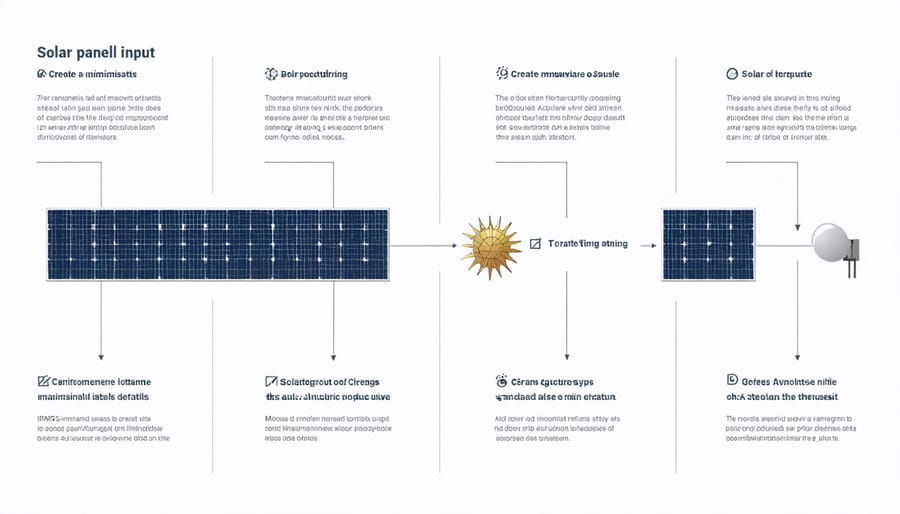
Long-Term Environmental Impact
Panel Lifespan and Durability
Modern solar panels are remarkably durable and long-lasting, typically maintaining their efficiency for 25-30 years or more. Most manufacturers guarantee that their panels will operate at 80% or higher of their original capacity even after 25 years of use. This impressive lifespan means that solar panels continue producing clean energy for decades, maximizing their positive environmental impact.
The gradual efficiency loss is minimal, with most panels degrading at a rate of only 0.5% to 1% per year. This slow decline ensures that homeowners can rely on consistent energy production throughout the system’s lifetime. The panels are built to withstand various weather conditions, including heavy rain, snow, and hail, thanks to their tempered glass construction and rigorous testing standards.
What’s particularly encouraging is that even after their primary service life, solar panels don’t become worthless. Many components can be recycled, including the aluminum frames, glass covers, and silicon cells. While current recycling infrastructure is still developing, the industry is making significant strides in creating more efficient recycling processes.
The durability of solar panels helps offset their initial manufacturing impact, as their long operational life means more clean energy production over time. This extended lifespan, combined with improving recycling capabilities, makes solar panels an increasingly sustainable choice for environmentally conscious homeowners.
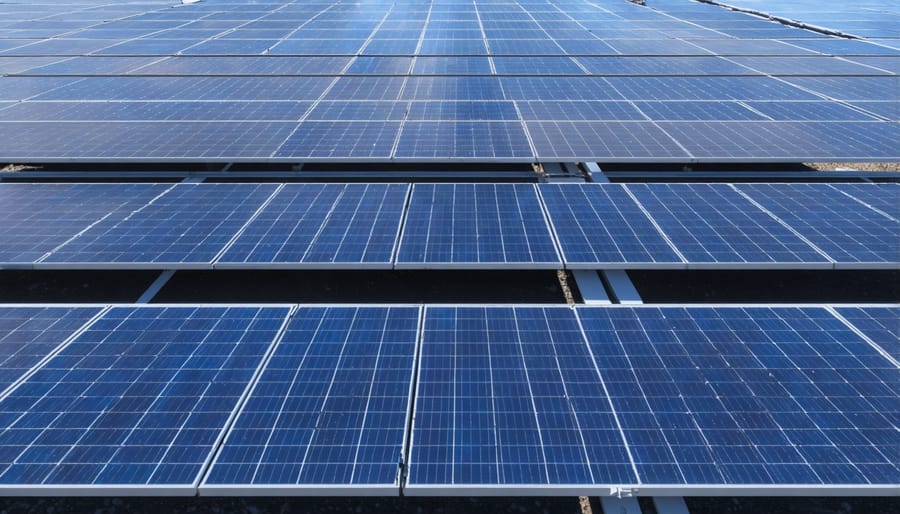
Recycling and End-of-Life Solutions
As solar panels reach the end of their 25-30 year lifespan, responsible disposal and recycling become crucial considerations for maintaining the technology’s environmental benefits. Today’s solar panel recycling solutions can recover up to 95% of the materials used in panels, including valuable components like silicon, silver, and aluminum.
Many manufacturers now implement take-back programs, making it easier for homeowners to dispose of old panels responsibly. These programs ensure materials are properly processed and reused in new panel production, creating a circular economy that further reduces the industry’s environmental footprint.
The recycling process has become increasingly efficient, with specialized facilities using mechanical and chemical processes to separate and purify materials. This advancement helps recover precious metals and reduces the amount of waste heading to landfills. Additionally, ongoing research and development in recycling technologies promise even more effective solutions for the future.
As the solar industry matures, recycling infrastructure continues to expand, making end-of-life management more accessible and cost-effective. This progress, combined with improving panel efficiency and durability, means that solar energy’s environmental impact becomes more positive with each technological advancement.
For homeowners, choosing manufacturers with established recycling programs ensures their investment in clean energy remains environmentally responsible throughout the entire lifecycle of their solar installation.
The evidence is clear: solar energy stands as one of our most environmentally friendly power sources, offering substantial benefits that far outweigh its limited drawbacks. While the manufacturing process does have some environmental impact, the long-term advantages of solar power – including zero emissions during operation, minimal water usage, and reduced dependence on fossil fuels – make it an invaluable tool in our fight against climate change.
By choosing solar energy, homeowners not only reduce their carbon footprint but also contribute to a cleaner, more sustainable future. A typical residential solar installation can prevent approximately 3-4 tons of carbon emissions annually, equivalent to planting over 100 trees. As manufacturing processes continue to improve and recycling programs become more sophisticated, the environmental impact of solar panel production will decrease even further.
The transition to solar energy represents a crucial step toward a more sustainable world. When we consider the complete lifecycle of solar panels – from manufacturing to decades of clean energy production to eventual recycling – the environmental benefits become even more apparent. By investing in solar power today, we’re making a choice that benefits not only our immediate environment but also future generations.
For homeowners considering solar installation, the decision extends beyond personal benefits to become part of a larger solution for environmental preservation. Every solar panel installed brings us closer to a cleaner, more sustainable energy future.

